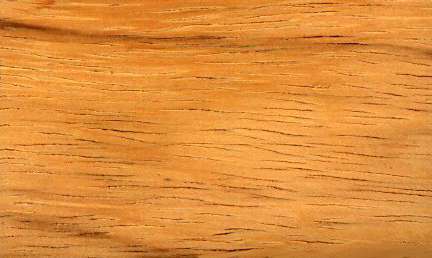 
Acacia male (Parkia pendula)
Family: Leguminosae
Common names: Acacia male, Cascaron, Faveiro, Favieira bolota, Faviera, Jupuuba, Muirarema, Orella de macaco, Parica, Visqueiro
Distributed in: Brazil, Columbia, Costa Rica, French Guiana, Peru, Venezuela (Central America, Latin America)
Distribution overview: The species is the most widely distributed neotropical species of Parkia, occurring in lowland terra firme rain forests from Honduras southwards (though not yet known from Nicaragua to Panama) to Colombia, Venezuela, the Guianas, Amazonian Peru, Brazil, and Bolivia, as well as southeastern coastal Brazil, at elevations of up to 1640 feet (500 m).
Common uses: Balusters, Boat building, Building construction, Building materials, Cabin construction, Canoes, Ceiling, Chairs, Chests, Concealed parts (Furniture), Construction, Desks, Dining-room furniture, Dowell pins, Dowells, Drawer sides, Factory construction, Fine furniture, Floor lamps, Furniture , Furniture components, Furniture squares or stock, Hatracks, Heavy construction, Interior construction, Kitchen cabinets, Lifeboats, Light construction, Living-room suites, Millwork, Mine timbers, Moldings, Office furniture, Paneling , Radio - stereo - TV cabinets, Rustic furniture, Shipbuilding, Stairrails, Stairworks, Stools, Stringers
Product sources: The ITTO reports that the species is an important source of timber. It is exported at a low but regular rate. The timber is imported into Japan from Brazil.
Environment profile: Extinct, Endangered, Vulnerable, or Rare within significant parts of its range
Tree size: Tree height is 30-40 m
Colors: the heart isPink, Redand the sapwoodWhite, Yellow.The grain isEven
The grain is straight to interlocked.
, the textureMediumand the lusterMedium
Natural durability: Resistant to termites, Susceptible to termite attack
Odor: No specific smell or taste
Kiln Drying Rate: Naturally dries quickly
Drying Defects:
The timber may check and distort moderately in drying. Casehardening and collapse are also reported to occur
Ease of Drying: Requires care to minimize degrade
Blunting Effect: Slight blunting effect on cutters
Boring: Responds very well to boring
Carving: Good results
Cutting Resistance: Easy to saw
Gluing: Good gluing properties
Mortising: Finishes well
Moulding: Good moulding properties
Movement in Service: Good moulding properties
Nailing: Fairly Difficult to Very Difficult
Planing: good
Resistance to Impregnation: Very difficult to penetrate with preservatives.
Response to hand tools: Responds very well to hand tools
Routing recessing: Good routing characteristics
Sanding: Yields a clean surface
Turning: Turns easily to yield clean surfaces
Polishing: Very Good to Excellent;
- Numerical data Metric
- Numerical data English
- Strength properties
- References
 |
 |
 |
 |
| Item |
Green |
Dry |
Metric |
| Specific Gravity |
0,47 |
|
|
| Density |
|
|
kg/m3 |
| Bending Strength |
611 |
895 |
kg/cm2 |
| Crushing Strength |
40 |
67 |
kg/cm2 |
| Hardness |
|
420 |
kg |
| Impact Strength |
|
|
cm |
| Shearing Strength |
|
112 |
kg/cm2 |
| Stiffness |
104 |
123 |
1000 kg/cm2 |
| Tangential Shrinkage |
8 |
|
% |
| Radial Shrinkage |
4 |
|
% |
| Weight |
|
897 |
kg/m3 |
| Maximum Load |
|
|
cm-kg/cm3 |
| Toughness |
|
|
cm-kg |
| Static Bending |
|
|
kg/cm2 |
|
 |  |  |  | | Item | Green | Dry | English | | Bending Strength | 8699 | 12731 | psi | | Crushing Strength | 575 | 963 | psi | | Hardness | | 926 | lbs | | Maximum Crushing Strength | 4106 | 6076 | psi | | Shearing Strength | | 1602 | psi | | Stiffness | 1491 | 1759 | 1000 psi | | Specific Gravity | 0.47 | | | | Weight | | 56 | lbs/ft3 | | Radial Shrinkage | 4 | | % | | Tangential Shrinkage | 8 | | % | | Volumetric Shrinkage | 11 | | % | |
Bending strength in the air-dry condition (about 12 percent moisture content) is high - comparable to Teak. It has medium compression strength parallel to grain, comparing favorably to Mahogany. It is fairly hard, resisting wear, denting, and marring fairly well
Chichignoud, M., G. Deon, P. Detienne, B. Parant and P. Vantomme.1990.Tropical Timber Atlas of Latin America.International Tropical Timber Organization (ITTO, Centre Technique Forestier Tropical, Division of CIRAD, 45 bis Avenue de la Belle Gabrielle, Nogent-sur-Marne, CEDEX, France.Teixeira, D. E., M. A. E. Santana and M. Rabelo de Souza.1988. Amazonian Timbers for the International Market.ITTO Technical Series 1.Brazilian Institute for Forestry Development, Brazil.
|









